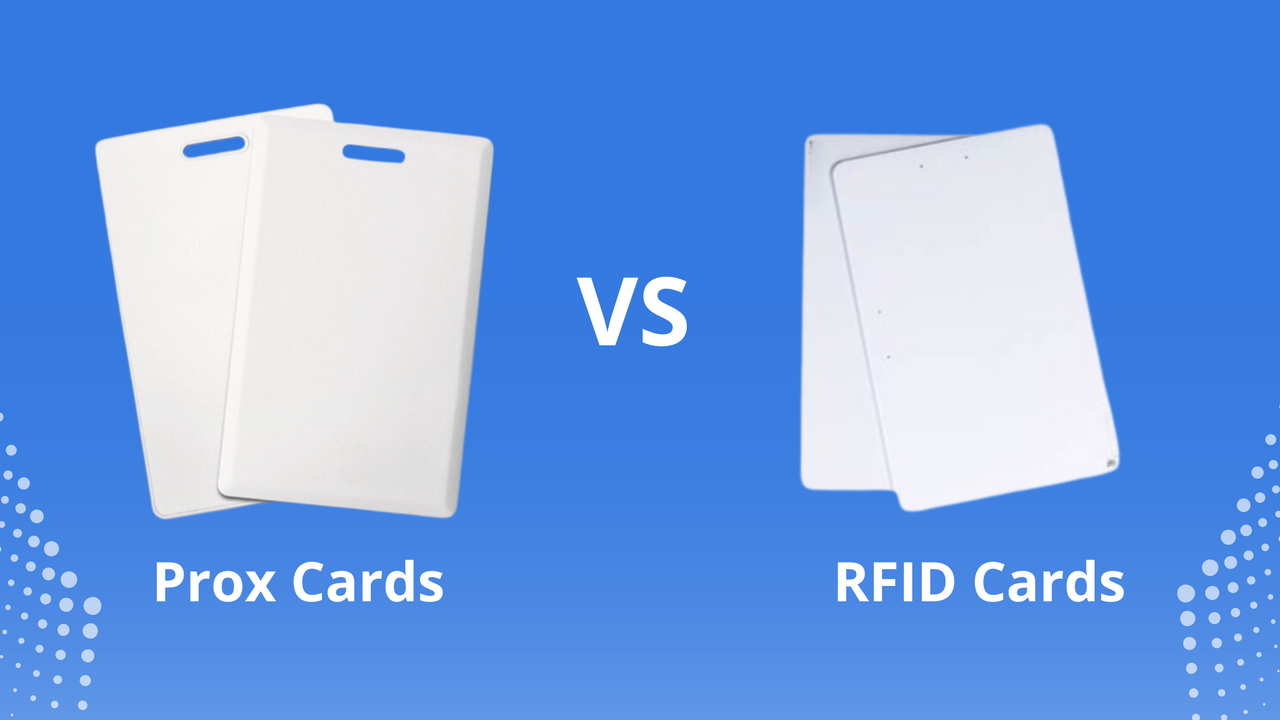RFID (Radio Frequency Identification) technology has evolved significantly, giving rise to different types of cards designed for specific use cases. Whether you're managing access control, tracking assets, or improving security, it's important to choose the right card technology. In this blog, we'll explore the differences between three popular card types: 125 kHz cards, smart cards, and UHF RFID cards.
1. 125 kHz Cards (Low-Frequency Cards)
Overview: 125 kHz cards belong to the low-frequency (LF) RFID category and are often used in access control systems. These cards operate at a frequency of 125 kHz, which gives them certain characteristics that are ideal for close-range applications.
Key Features:
- Short read range: Typically, the read range is between 2 to 10 centimeters. This makes them suitable for access control in secure environments, where the card must be brought close to the reader.
- Low data storage: These cards generally have limited storage capacity and are mainly used to store a unique identifier (UID).
- Less secure: 125 kHz cards lack strong encryption capabilities. As a result, they can be more vulnerable to hacking and cloning compared to modern alternatives.
- Cost-effective: Because they are simpler in technology and widely available, 125 kHz cards are often cheaper than more advanced RFID solutions.
Common Applications:
- Access control (e.g., door entry systems)
- Time and attendance tracking
- Low-security identification systems
2. Smart Cards (13.56 MHz Cards)
Overview: Smart cards operate at a higher frequency of 13.56 MHz, which is categorized as high-frequency (HF) RFID. These cards typically feature enhanced security and can store more data compared to 125 kHz cards.
Key Features:
- Improved security: Smart cards use encryption algorithms to protect stored data, making them suitable for sensitive applications such as payment systems or secure access.
- Contactless communication: These cards can communicate with readers at a distance of up to 10 centimeters without physical contact, making transactions more convenient.
- More storage capacity: Smart cards are equipped with a microchip, which allows for greater storage and processing power. This enables them to store not only a unique identifier but also other data like user credentials, payment information, or personal details.
- Versatile use: They can support multiple applications on a single card, such as access control, payment, and identity verification.
Common Applications:
- Contactless payment systems (e.g., credit cards, public transit cards)
- Secure access control (e.g., government IDs, corporate access)
- Electronic passports
3. UHF RFID Cards (Ultra-High Frequency RFID)
Overview: UHF RFID cards operate at a frequency range between 300 MHz and 3 GHz, with 860–960 MHz being the most commonly used for commercial applications. These cards are designed for long-range, high-speed communication.
Key Features:
- Extended read range: UHF RFID cards can be read from distances of several meters, making them ideal for applications where long-range tracking is necessary.
- High-speed data transfer: These cards can be read quickly and efficiently, even when multiple cards are in the reader's range.
- Lower frequency interference: The UHF spectrum is less affected by interference from other devices, making UHF RFID systems more reliable in environments where multiple RF technologies are in use.
- Greater storage options: UHF RFID cards offer more flexibility in terms of data storage, though they are typically not as secure as smart cards due to the lack of encryption by default.
- Costlier infrastructure: UHF systems often require more expensive infrastructure, such as specialized readers and antennas, which can increase the overall cost of implementation.
Common Applications:
- Asset tracking and inventory management
- Supply chain logistics
- Vehicle identification in parking systems
- High-speed toll collection
Key Differences at a Glance
| Feature | 125 kHz Cards | Smart Cards (13.56 MHz) | UHF RFID Cards |
| Frequency | 125 kHz (Low Frequency) | 13.56 MHz (High Frequency) | 860–960 MHz (Ultra-High Frequency) |
| Read Range | 2-10 cm | 1-10 cm | Up to 12 meters or more |
| Data Capacity | Low (typically UID only) | High (can store multiple apps and data) | Moderate (depends on system) |
| Security | Low | High (with encryption) | Moderate (may require additional security features) |
| Cost | Low | Moderate to High | High (infrastructure costs) |
| Common Uses | Access control, ID badges | Payments, secure access, ID verification | Asset tracking, logistics, vehicle identification |
Choosing the Right Card for Your Application
Each type of card offers unique advantages and is suited for specific environments:
- 125 kHz cards are ideal for simple, close-range access control systems where cost-efficiency is a priority.
- Smart cards provide enhanced security, making them perfect for secure access, payments, and identity verification.
- UHF RFID cards are the best choice for applications requiring long-range tracking and high-speed communication, such as asset management and logistics.
Understanding these differences will help you choose the card technology that best fits your needs, ensuring security, efficiency, and ease of use in your system.
Contact us today
The selection between 125 kHz, smart cards, and UHF RFID cards ultimately comes down to the specific requirements of your application—whether you prioritize range, security, or cost. As RFID technology continues to evolve, knowing the distinctions will help you make informed decisions about your access control and tracking needs. Contact us today for more information on prox cards and RFID cards.


